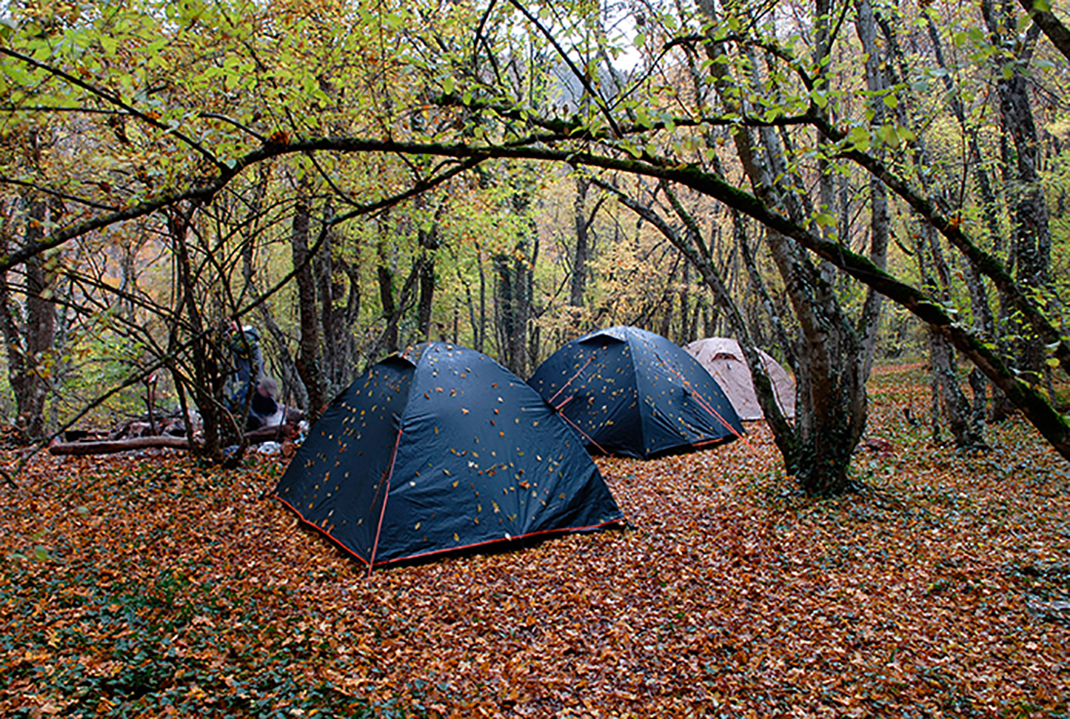Fact: soggy camping is miserable camping. Just because you have a tent and rain fly doesn't mean you're safe from getting soaked. Improper use, placement or care for your tent or rain fly can mean a ruined camping trip. Here are some tips for getting the most out of your gear.
First Things First
» Before you start packing, check the weather forecast and prepare accordingly.
» At the campsite, set down a tarp first to ensure the bottom of your tent doesn't get torn or scratched.
» Cut or tuck your tarp so it doesn't stick out from your tent. If it does, it could collect water.
» Choose a flat area on high ground. If it rains, your campsite won't get flooded.
Be Good to Your Gear...
...while at the campsite
» Don't bring hiking boots inside the sleeping area of the tent. Rocks and grit that the boots pick up could tear the inside of the tent.
» Bring a lubricant such as graphite powder or WD-40 in case a tent zipper gets stuck. Never force a zipper that isn't cooperating - you could easily damage your tent.
» If they aren't already, consider waterproofing your rain fly and tent. Waterproof coating can be applied to the seams of the fabric, which is the easiest point for water to leak through.
» Never store food in your tent. Not only is this a safety issue for campers, but animals could damage your tent in pursuit of a meal.
» Never leave your tent assembled in sunlight for too long. Extended exposure to UV rays can cause "sun rot" and damage the fabric of the tent. If you do set up in bright sun, be sure to use your rain fly, which is typically more UV-resistant than the tent itself.
...and later, at home
» Wash and dry your tent and rain fly after every use, but never in a washing machine or dryer. Rinse the whole thing with water once you're home and let it air-dry naturally. If things got particularly dirty, a sponge and some mild soap will do the trick.
» Be wary of mold. Be sure that your tent is dry before you put it away. If it rained on your trip, be sure to let your tent air-dry back at home. Never stow away a damp tent.
» If you do smell or see mold growth, use a non-abrasive, gentle soap that kills micro-organisms. Then, air-dry thoroughly.
» Don't carelessly stuff your tent and rain fly into their bags. Roll them up gently and treat them with care. It goes a long way to preserving the longevity of your equipment.
How to Store It
» Keep your tent in a dry, cool location. If the only suitable place for storage is somewhere like an attic that can be susceptible to temperature changes, stow your tent bag in a plastic crate.
» If possible, store tent poles fully assembled. Storing them folded up isn't a deal-breaker, but it can shorten the lifespan of the cord connecting the poles together.

